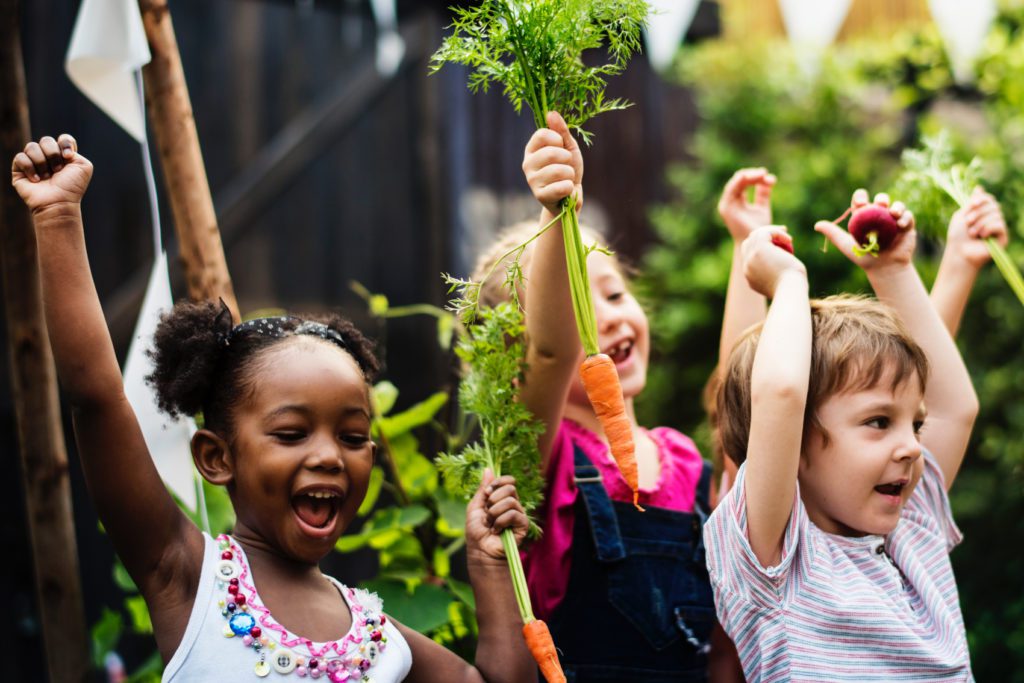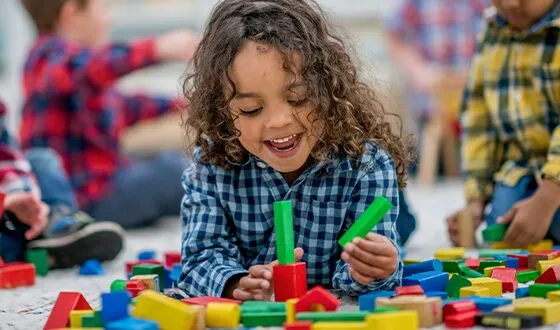What Can You Learn From a Garden?


How to Cultivate a Classroom Garden
Spring is in the air! You may be thinking that this is the perfect time to start a garden with the children in your preschool or kindergarten class and asking yourself questions such as “What can the children learn through gardening?” and most importantly, “Where should I begin?”
From digging and planting to watering and weeding, gardening offers a variety of opportunities for hands-on exploration in a medium that many children enjoy—dirt! When young children plant a garden, they experience the satisfaction of seeing their care and nourishment result in a growing garden. As they follow their curiosity and implement their own ideas, the children will build confidence in themselves and discover what plants need to grow. Gardening with children is not only fun and engaging, it also supports the development of the whole child. Planning, planting, and tending to a growing garden requires a wide variety of skills from all domains of development and learning that are highlighted below.
- Social–emotional: Gardening is a team effort. Children and adults work together to plan, plant, and care for a growing garden. The necessary teamwork helps children learn how gardens can build a sense of community and gain an understanding of how people care for one another.
- Physical: Preparing the earth, digging holes, planting tiny seeds, weeding, and watering plants provide opportunities for children to develop both fine-and gross-motor skills. Crouching down to observe plants, carefully stepping over growing sprouts, and carrying and using tools promotes their balance and coordination.
- Language and Literacy: Children develop language and literacy skills as they have rich conversations with their classmates to create garden plans and discuss how their plants grow over time. They interact with different kinds of text by listening to books about gardening and looking at plant names on seed packets and plant care cards. Children practice writing by creating plant markers and documenting the garden’s growth.
- Cognition: Gardening provides an abundance of sensory experiences for children: they can get their hands messy in the soil and gently touch the leaves of the growing plants, smell and taste fragrant herbs, and see the rainbow of colors that the plants and their blossoms create. These sensory experiences promote self-regulation and build children’s interests and curiosities about gardening.
- Mathematics: Planning and planting a garden give children opportunities to explore a variety of math concepts––measurement as they space out plants in a row, counting to determine how many plants are in the garden, simple addition and subtraction as they add or take away plants from the garden, and making comparisons as they document how plants grow and change over time.
A class garden can fit into many different environments. Consider the space you have in your classroom or outdoors. Do you have a protected area of soil? Do you have a sunny windowsill where you can place a few containers of plants? Or do you have an area where you can place raised garden bed? Once you have determined where your garden will go, it’s time to start planning it with the children!
Choose a garden theme. Having a garden theme can help you and the children get excited about what you are growing and narrow down which plants to include. Talk with the children about what kind of garden they would like to create. Consider ideas such as a pizza garden (tomatoes, basil), rainbow garden (different types of colorful flowers), or salad garden (lettuce, carrots, tomatoes, and cabbage).
Involve the school, your community, and families. Many people enjoy gardening as a hobby and may be excited to share their knowledge and experience with the children. Invite family, community, and school members to share advice about how to plant and care for a garden or donate materials for you and the children to use to care for your class garden.
Manage your expectations. Gardening is a new skill for children. They will likely plant seeds too closely together, pull up plants before they are ready, accidentally step on the plants, and overwater areas of the garden. These are all opportunities for the children to learn more about gardening and how to care for plants. When these things happen, encourage the children to notice the impact: “Look, all of the water is washing our seeds away. They aren’t where we want them to be anymore.” Help the children fix the problem: “Let’s collect the seeds and put them back in the soil.” Then ask them to think about how they can keep that problem from happening again: “What can we do differently next time so our seeds don’t get washed away?”
Incorporate gardening into your weekly routines. Once your garden is planted, it will need to be regularly weeded and watered. Establish set times during the week when you and the children tend to the garden. This is also a great opportunity for children to notice and document any changes in the garden and problem-solve any issues such as wilting plants or pests in the garden.
Give children ownership of the garden. Create classroom jobs related to caring for the garden. You can include roles such as Waterer, Pest Inspector, Weed Puller, Plant Checker, and Harvester. Having ownership of the garden will build children’s sense of responsibility for caring for the garden and encourage them to take pride in their accomplishments as the garden grows.
Celebrate growth and discovery. At the end of the growing season, celebrate the children’s gardening efforts. Create a display that shows how the garden grew and how the children cared for it over time. Highlight the children’s discoveries and invite them to share what they learned and what they enjoyed about gardening.
